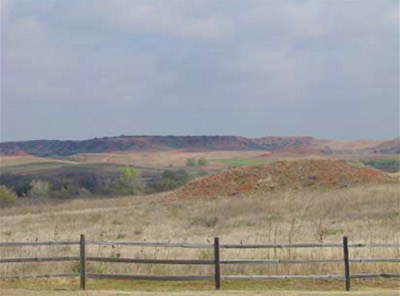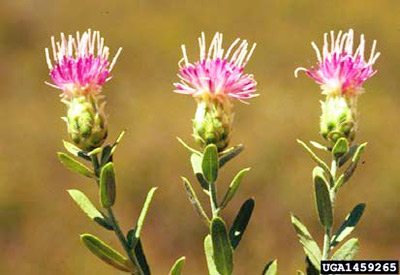Climate change may have direct and/or indirect effects on many elements of Southern Plains network ecosystems, from streams and grasslands to fires and birds.
Water Resources
Freshwater habitats are diverse and productive ecosystems, providing habitat for aquatic plant, invertebrate, and vertebrate species, and the availability of groundwater has critical consequences for flora and fauna, as well as nutrient, water, and energy flows. Water resources in the Southwest have been strongly affected by human activity and are projected to be influenced by climate change. Climate change may have direct and/or indirect effects on streamflow and water quality and on groundwater resources. As temperature and precipitation patterns affect the abundance, type, and distribution of vegetation cover in watersheds, changes in flood magnitude and duration, sediment loads, and water chemistry will occur. Southern Plains Network (SOPN) monitoring of surface water quantity and quality and groundwater levels will allow park managers to address issues occurring within park boundaries and will provide an index of overall watershed condition.
Grasslands

Changes in climate, combined with anthropogenic effects, are expected to alter the type (e.g., rain versus snow) and amount of precipitation and the seasonality of large precipitation events, with unknown implications for grassland systems. Increased drought has the possibility of altering the seasonality, severity and frequency of fire as well as post-fire regeneration. The anthropogenic effect of increased atmospheric carbon has been considered an enhancement to shrub encroachment into gruslands. Range expansions of new plant species into network parks can be expected. SOPN grassland monitoring using permanent transects was designed to ascertain broad-scale changes in vegetation (composition, cover, frequency) and soil properties in the oontext of changes in other ecological drivers, stressors, and processes, including climate.
Invasive Exotic Plants & Fire

Photo by Steve Dewey, Bugwood
Climatic changes are predicted to provide exotic plant species with new opportunities for invasion. Because they fragment native ecosystems, displace native plants and animals, and alter ecosystem function, invasive exotics are one of the most serious threats to natural ecosystem integrity. They can also alter fire regimes by causing fires to burn more swiftly or intensely. Several climate models predict that climate change will result in more frequent and extreme droughts that could episodically reduce water availability and soil moisture. An increase in exotic invasions, in combination with decreasing soil moisture that may accompany climate change, could set the stage for fires with the potential to dramatically impact grassland ecosystems. SOPN monitoring of invasive exotics along high- and low-risk introduction vectors provides park managers with data on early detection of these species, which should provide valuable information to help them deal with invasive plants in the face of climate change.

Photo by Robert Bennetts, NPS
Because they can respond quickly to changes in resource conditions, changes in landbird populations may indicate changes in the biotic or abiotic components of the environment upon which they depend. Despite being relatively mobile, climate change may affect birds in a variety of ways. For example, it may lead to a change in the timing of migration, changes in vegetation and insect abundance (which could affect life history constraints or reproductive strategies), and shifts in the latitudinal range for some species. Bird monitoring data can be used to ascertain the overall natural condition of SOPN parks, and can provide insights into the potential consequences of ecosystem drivers, such as climatic change.
Contact Information
Robert Bennetts, Southern Plains I&M Network Coordinator
Capulin Volcano National Monument, P.O. Box 40, Des Moines, NM 88418. Robert_Rennets@nps.gov; phone 719-846-4663.
Prepared by the Southern Plains Notwork I&M Program, 2011.
Tags
- alibates flint quarries national monument
- bent's old fort national historic site
- capulin volcano national monument
- chickasaw national recreation area
- fort larned national historic site
- fort union national monument
- lake meredith national recreation area
- lyndon b johnson national historical park
- pecos national historical park
- sand creek massacre national historic site
- washita battlefield national historic site
- swscience
- sopn
- american southwest
- southern plains
- arid lands
- climate change
- birds
- landbirds
- grassland communities
- invasive plants
- water quality
- surface water dynamics
- groundwater dynamics
- project
- science
- monitoring
- climate change effects
- climate
Last updated: December 9, 2022
